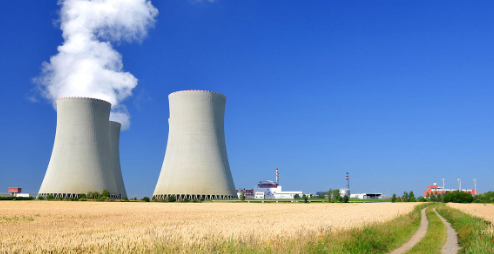
5 Departments for Science Innovation & Technology in the Field of Nuclear Energy-Nuclear energy has always been a subject of intrigue and debate. While some see it as a beacon of hope for sustainable energy, others view it with caution due to its potential risks. Nevertheless, the field of nuclear energy is continuously evolving, thanks to the relentless efforts of various departments dedicated to science innovation and technology. Here, we explore five key departments that are spearheading advancements in nuclear energy.
1. Department of Energy (DOE) – United States
The U.S. Department of Energy (DOE) plays a pivotal role in driving science innovation in the nuclear energy sector. With a mission to ensure America’s security and prosperity by addressing its energy, environmental, and nuclear challenges, the DOE is at the forefront of nuclear research and development. The DOE’s Office of Nuclear Energy focuses on advancing nuclear power as a resource capable of meeting the nation’s energy, environmental, and national security needs.
One of the DOE’s significant initiatives is the Advanced Reactor Demonstration Program (ARDP), which aims to expedite the development of advanced nuclear reactors. These reactors promise to be safer, more efficient, and more sustainable than their predecessors. The DOE’s commitment to innovation ensures that the U.S. remains a leader in nuclear energy technology(Read more:AI Technology 2024: AI Tools Used in Communication and Collaboration)
2. National Nuclear Laboratory (NNL) – United Kingdom
The National Nuclear Laboratory (NNL) in the UK is another powerhouse in the field of nuclear science innovation. NNL provides critical support to the nuclear industry by delivering world-class research, technology, and consultancy services. The lab’s work spans across the entire nuclear fuel cycle, from fuel fabrication to waste management.
NNL is heavily involved in developing new nuclear technologies, such as Small Modular Reactors (SMRs) and advanced fuel types that enhance reactor performance and safety. Their efforts in science innovation are crucial for ensuring the UK’s energy security and reducing carbon emissions.
3. Japan Atomic Energy Agency (JAEA)
Japan’s Atomic Energy Agency (JAEA) is a cornerstone of science innovation in nuclear energy within Asia. Post-Fukushima, JAEA has been instrumental in improving nuclear safety and advancing nuclear technology. JAEA’s research covers a broad spectrum, from nuclear safety and disaster prevention to the development of fast breeder reactors and fusion energy.
One of JAEA’s notable projects is the Monju Fast Breeder Reactor, designed to generate more fuel than it consumes, thereby addressing concerns about nuclear fuel sustainability. JAEA’s continuous push for innovation not only enhances Japan’s energy landscape but also contributes to global nuclear safety and technology advancements(Read more:Information Technology 2024: The Importance of Cybersecurity for Protecting Data)
4. Commissariat à l’énergie atomique et aux énergies alternatives (CEA) – France
In France, the Commissariat à l’énergie atomique et aux énergies alternatives (CEA) is a key player in nuclear science innovation. CEA’s mission is to develop nuclear energy and alternative energy technologies to ensure energy transition and sustainability. France, known for its reliance on nuclear energy, benefits significantly from CEA’s cutting-edge research and development.
CEA’s work includes the development of Generation IV reactors, which are designed to be more efficient, safer, and produce less waste than current reactors. CEA is also involved in the ITER project, an international effort to develop nuclear fusion as a new source of energy. The CEA’s pioneering efforts are crucial for France’s energy future and for global advancements in nuclear technology.
5. Australian Nuclear Science and Technology Organisation (ANSTO)
While Australia does not have a commercial nuclear power industry, the Australian Nuclear Science and Technology Organisation (ANSTO) is a leader in nuclear research and innovation. ANSTO operates the OPAL research reactor, which is one of the most advanced multipurpose research reactors in the world.
ANSTO’s research focuses on nuclear medicine, materials science, and environmental science, utilizing nuclear techniques to solve pressing issues. Their work in radiopharmaceuticals, for example, is groundbreaking and has significant implications for cancer treatment. ANSTO’s contributions to science innovation extend beyond energy to improving health and environmental outcomes globally.
Conclusion
These five departments exemplify the spirit of science innovation in the field of nuclear energy. Through their relentless pursuit of research and development, they are addressing the challenges of today while paving the way for a sustainable and secure energy future. From advanced reactors to nuclear safety and fusion energy, the work being done by these institutions is crucial for harnessing the full potential of nuclear energy. As we look to the future, their efforts will continue to shape the landscape of energy and technology, ensuring that nuclear energy remains a viable and innovative solution for global energy needs.
Read More:Business Cards: The Evolution and Importance in Modern Networking 2024




